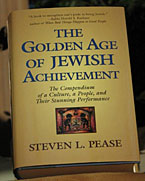Excerpt:
Edwin Land©
"An essential aspect of creativity is not being afraid to fail."
Edwin Land
 Jewish persecution in Czarist Russia led Avram and Ella Salmonovitch to flee Odessa for the United States in the 1880s with their three sons, Harry, Sam and Louis. Like millions of fellow immigrants, they left New York's Castle Garden emigrant processing station with new names. They were now Abraham and Ella Land. The five Lands were soon joined by two more brothers and three sisters and, in a fashion typical of striving immigrant Jews, they soon achieved what they could not in Russia. Among the siblings, two boys became lawyers, a third traded secondhand machinery and Harry followed his father into the scrap metal business. The three daughters married a lawyer, an architect and a retailer.
Jewish persecution in Czarist Russia led Avram and Ella Salmonovitch to flee Odessa for the United States in the 1880s with their three sons, Harry, Sam and Louis. Like millions of fellow immigrants, they left New York's Castle Garden emigrant processing station with new names. They were now Abraham and Ella Land. The five Lands were soon joined by two more brothers and three sisters and, in a fashion typical of striving immigrant Jews, they soon achieved what they could not in Russia. Among the siblings, two boys became lawyers, a third traded secondhand machinery and Harry followed his father into the scrap metal business. The three daughters married a lawyer, an architect and a retailer.
Harry moved his business to Norwich Connecticut and began processing most of the scrap metal from the Electric Boat Company, which builds submarines. He married Matha Goldfaden, had a daughter, Helen, and four years later, on May 7, 1909, a son, Edwin Herbert. Helen soon nicknamed her little brother "Din". It was a nickname that would stick for the rest of his life.
As a child, kaleidoscopes and stereopticons fascinated Din. He read everything he could find on optics, including the leading technical treatise of the era, Robert Wood Johnson's Physical Optics. Land said he slept with it under his pillow and read it, "like a Bible." At 13, he became fascinated with the phenomenon of polarization when a camp counselor used a piece of Iceland spar, the mineral calcite, to stop the glare reflecting from a tabletop.
One evening's near collision of an automobile and a farmer's wagon made him realize the risk of headlight glare blinding oncoming drivers. This became the first in a lifetime of problems that Land would focus his energies to solve....
